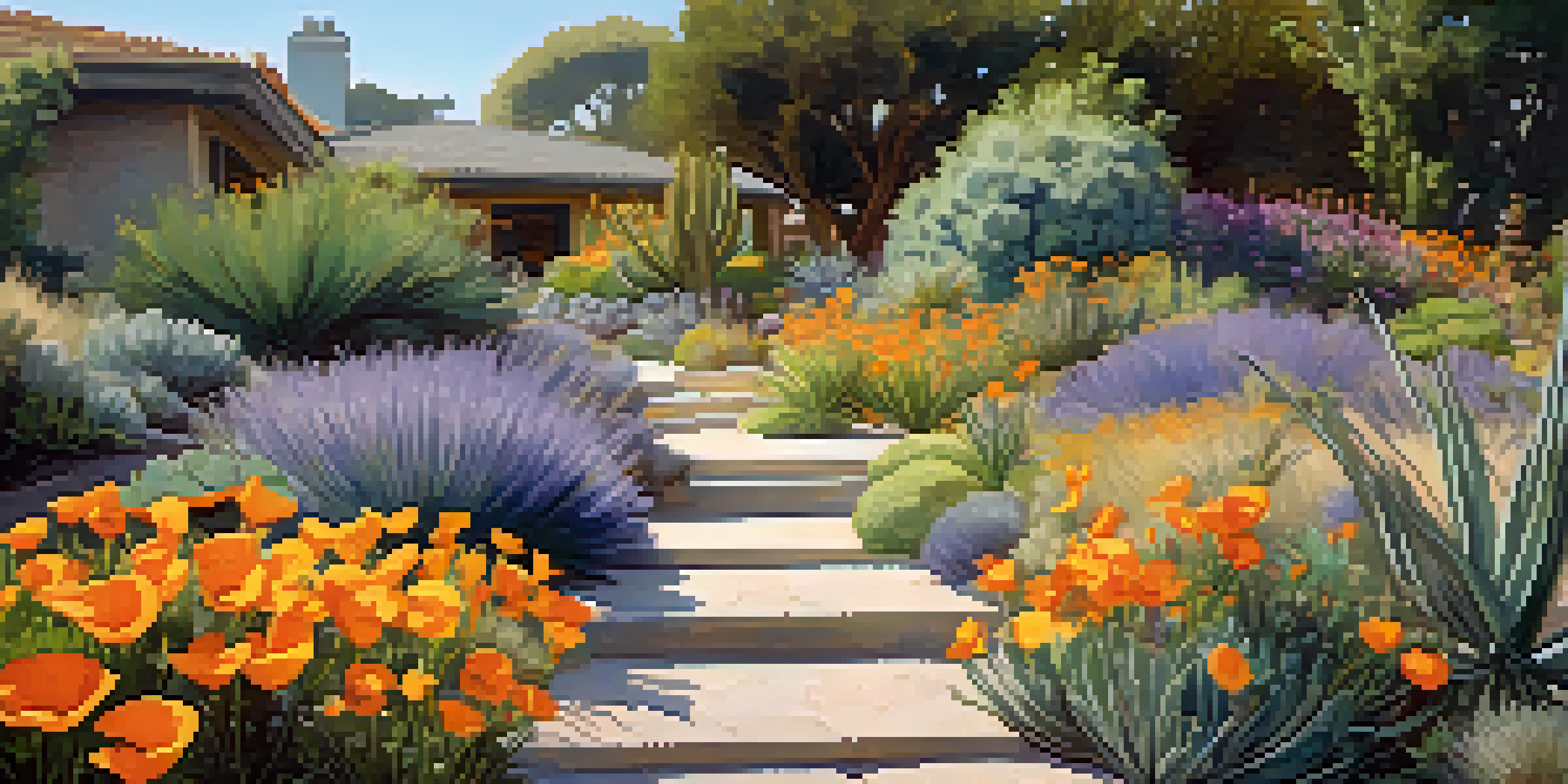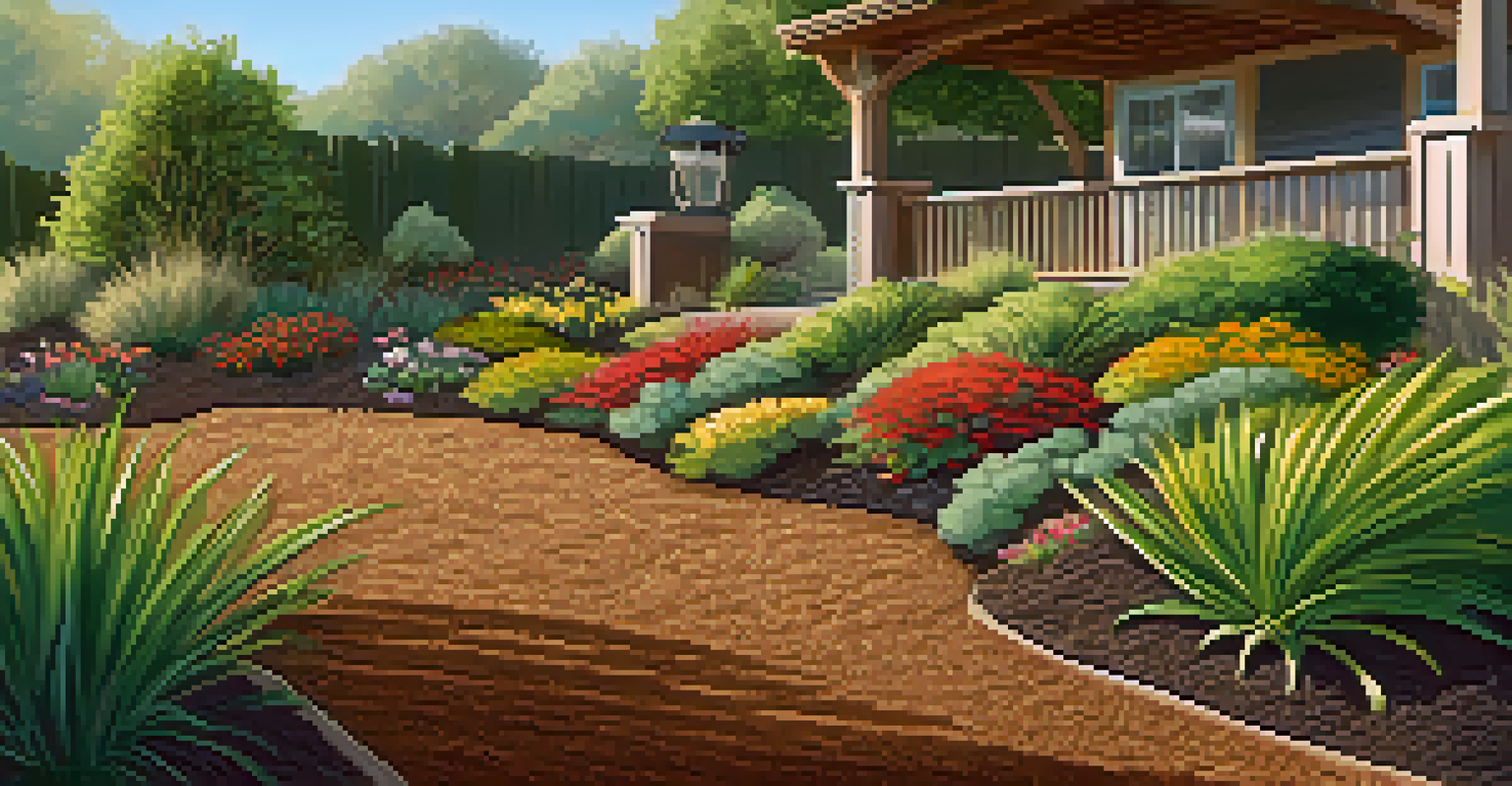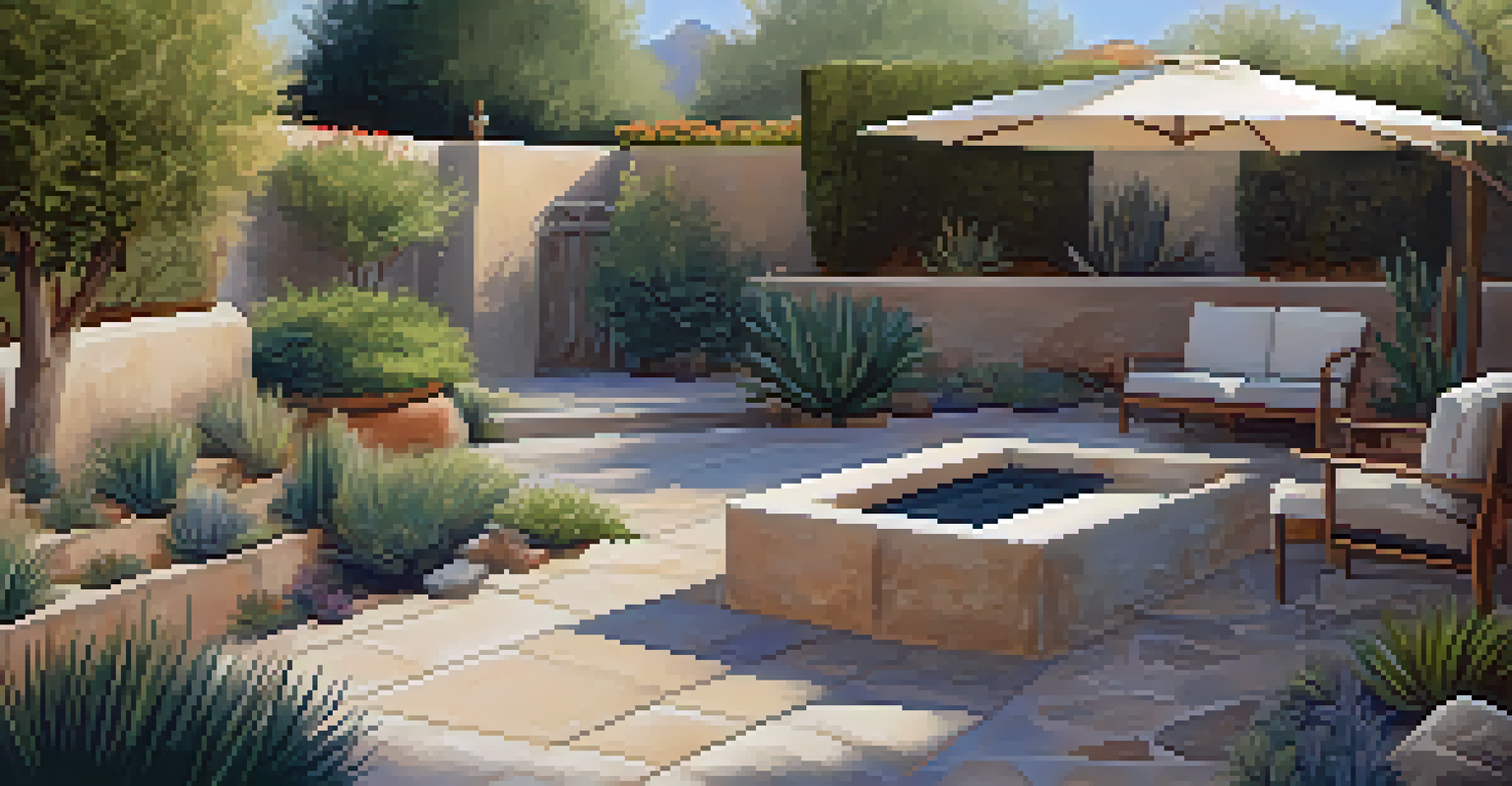Creating a Drought-Tolerant Garden in Santa Monica

Understanding the Santa Monica Climate and Soil
Santa Monica enjoys a Mediterranean climate, characterized by warm, dry summers and mild, wet winters. This unique weather pattern significantly influences the types of plants that thrive in the area. Understanding local soil conditions is also crucial, as sandy soils can drain quickly, making water retention a challenge.
The best time to plant a tree was twenty years ago. The second best time is now.
To create a successful drought-tolerant garden, start by testing your soil. A simple soil test can reveal pH levels and nutrient content, helping you choose the right plants. This knowledge allows you to amend the soil appropriately, ensuring that your garden has the best possible foundation.
Additionally, consider the microclimates in your yard. Areas that receive more sun or shade will influence plant selection, so take note of how sunlight moves across your garden throughout the day.
Choosing the Right Drought-Tolerant Plants
Selecting the right plants is key to establishing a drought-tolerant garden. Native plants, such as California poppies and succulents, are adapted to the local climate and generally require less water. These plants not only save water but also support local wildlife, such as birds and butterflies.

Incorporating a variety of textures and colors can make your garden visually appealing while keeping it sustainable. Consider using plants like lavender, agave, and ornamental grasses to add depth and interest. Grouping plants with similar water needs can also help optimize irrigation efforts.
Understanding Local Climate and Soil
Santa Monica's Mediterranean climate and sandy soils influence plant selection and garden design.
Don’t forget to check for drought-resistant hybrids and cultivars that provide the same beauty with less water. These options allow you to enjoy a lush garden while being environmentally responsible.
Effective Watering Strategies
Watering practices play a crucial role in maintaining a drought-tolerant garden. Deep, infrequent watering encourages plants to develop deeper root systems, making them more resilient during dry spells. Aim for watering in the early morning or late afternoon to minimize evaporation.
Gardening is the purest of human pleasures.
Drip irrigation systems are a fantastic investment as they deliver water directly to the roots, reducing waste. By using timers, you can ensure your plants receive the right amount of water without overdoing it, which can harm their health.
Collecting rainwater in barrels is another great way to make the most of natural resources. This not only conserves water but also provides your plants with nutrient-rich runoff.
Incorporating Mulch for Water Retention
Adding a layer of mulch to your garden beds can significantly improve moisture retention. Organic mulches, like wood chips or straw, not only suppress weeds but also break down over time, enriching the soil. This creates a healthier ecosystem for your plants.
A mulch layer can reduce soil temperature, protecting roots from extreme heat. This is especially beneficial during Santa Monica's long summers when temperatures can soar. Aim for a thickness of 2-4 inches to maximize benefits.
Choosing Drought-Tolerant Plants
Native plants and drought-resistant hybrids are ideal for creating a sustainable and visually appealing garden.
Keep in mind that mulch also aids in preventing erosion and runoff, keeping your garden looking its best. Regularly replenishing mulch ensures that its benefits are maintained throughout the growing season.
Designing a Functional Layout
When planning your drought-tolerant garden, consider creating distinct zones for different plant types. For instance, grouping succulents together or placing native grasses in a sunny spot can help optimize growth. This not only creates a visually appealing layout but also promotes health among your plants.
Incorporating pathways and seating areas can enhance the functionality of your garden, making it a space for relaxation and enjoyment. Natural materials like gravel or stone can blend beautifully with drought-resistant plants while maintaining a rustic charm.
Finally, don't shy away from using hardscaping elements, such as decorative rocks or boulders. These can add interest and structure to your garden while reducing the overall area that needs watering.
Maintaining Your Drought-Tolerant Garden
Maintenance is vital to the longevity of your drought-tolerant garden. Regular pruning and deadheading encourage new growth and keep plants looking tidy. Monitoring for pests and diseases will also help ensure your plants remain healthy and vibrant.
Adjusting your watering schedule based on seasonal changes is essential. During Santa Monica's rainy season, for example, you may be able to reduce your watering frequency significantly. Keeping an eye on weather patterns can help you conserve water effectively.
Effective Maintenance Strategies
Regular upkeep and monitoring of watering schedules are crucial for the health and longevity of a drought-tolerant garden.
Lastly, be patient as your garden matures. Many drought-tolerant plants take time to establish themselves, but with care and attention, they'll flourish beautifully over time.
Utilizing Resources for Inspiration and Support
There are numerous resources available to help you plan and execute your drought-tolerant garden. Local gardening clubs, botanical gardens, and extension services often offer workshops and materials tailored to the Santa Monica climate. Engaging with local experts can provide valuable insights and inspiration.
Online platforms and social media groups dedicated to gardening can also be a treasure trove of ideas. Engaging with fellow gardening enthusiasts allows you to share experiences, tips, and even plant swaps, fostering a sense of community.

Don’t hesitate to visit local garden centers to explore an array of drought-tolerant plants firsthand. Seeing plants in person can help you visualize how they might look in your garden and assist you in making informed decisions.